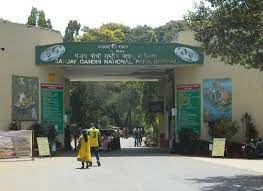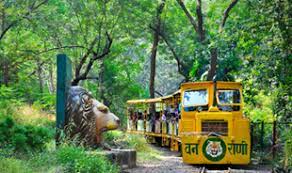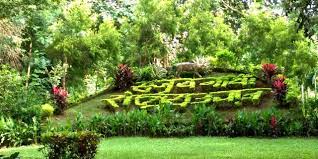Sanjay Gandhi National Park formerly Borivali National Park is one of the largely protected areas in North Mumbai for wildlife animal. Even though this park has over 2 million visitors every year, it’s more than 104 sq. km. of greenery and caves, including the famous Kanheri Caves, provides ample room for visitors to forget their in the middle of one of the largest cities in the world. The region has hilly areas and encompasses two lakes – Vihar Lake and Tulsi Lake. Enjoy the tiger safari, toy train ride and also the chance to see some beautiful birds and leopards as well.
The area of the Sanjay Gandhi National Park has a long written history dating back to the 4th century BCE. In Ancient India, Sopara and Kalyan were two ports in its vicinity that traded with ancient civilisations such as Greece and Mesopotamia. The 45 km (28 mi) land route between these two ports was partially passing through this forest.
The Brihanmumbai Municipal Corporation (formerly called the Bombay Municipal Corporation) acquired the catchment areas of the Tulsi and Vihar lakes and also included land from the government dairy of Aarey under protection. Hence, the Krishnagiri National Park was established under the Bombay National Park Act in 1942. At that time, the area of the park was only 20.26 km2 (7.82 sq mi). The dairy development board began operations near Krishnagiri National Park in 1954, but outside the area of the park. In 1969, 2,076 ha (5,130 acres) of the land of the Aarey Milk Scheme (now known as Aarey Milk Colony) was transferred to the forest department. However, this area was not notified as reserved or within protected forests. In 1976, an area of 68.27 km2 (26.36 sq mi) was officially designated as Borivali National Park.
Nearest Station: Borivali (Western Line)
Timings: 07:30 AM to 17:30 PM every day.


